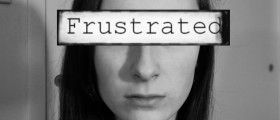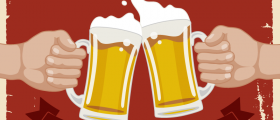
Posttraumatic stress disorder involves impaired mental balance caused by experiencing a terrible and life threatening events. People who suffer from this disorder generally re-experience stressful events, which cause avoidance of people, places and situations that could be remind them of lived trauma.
Although posttraumatic stress disorder hasn’t been recognized as an official diagnosis until 1980, symptoms of this disorder have been recorded by soldiers in the First World War Also in the second world war as the Vietnam War have been recorded the symptoms of this disorder, which were a consequence of trauma endured during the combat. Statistics show that in America at any time suffer about 5 million people from this disease. The highest propensity to develop this disorder has war veterans and victims of physical abuse. Also, ethnic minorities in America are more exposed to this disorder because of their greater burden of conscience, poor social support and constantly present racism pressure. It was noted that from 40% of children exposed to various traumas (witnessing the murder of their parents, physical abuse, rape) in childhood, 15% of girls and 6% of boys develop posttraumatic stress disorder.
PTSD can be treated by medical treatment and psychotherapy, including relaxation techniques for anxiety. The main role of psychotherapy is that people who suffer from this disorder receive all necessary information about the disease, to openly speak about their trauma and to learn how to get rid of fears and misinterpretations of their own thoughts through practicing normal life situations. Psychotherapy helps patients, using relaxation techniques to control their anger and bad thoughts, improve communication and to manage their own anxiety. Cognitive psychotherapy known as Eye-movement desensitization and reprocessing assumes focusing on the therapist's finger which is moving quickly. During this action the patients should speak about their trauma and negative thoughts and feelings that occur. This therapy has shown a lot of efficiency, but it haven’t determined with certainty that there is a really need for moving a finger. Also, family and marital counseling for patients can be very useful, considering that their loved one can provide a large amount of information (the expression of feelings and behaviors, the possible use of narcotics, sleep habits, etc.) about patients that may be useful for treating PTSD. In addition, it was proved that solving sleep disorders through various methods of relaxation, positive self-talk and interpretation of nightmares direct impact on alleviating the symptoms of PTSD.
As for the drugs, in the treatment of PTSD are mostly used antidepressants (Prozac, Zoloft, Paxsil), which provenly correct the way of receiving information from the environment and reduce fear, anxiety, panic, aggressiveness, and possible suicidal thoughts. To overcome the difficulties that are physically shown, mostly uses clonidine, guanfacine and propranolol. In case of symptoms such as paranoia, anxiety, exclusion from reality and environments uses Antipsychotic (Risperdal, Zyprexa, Seroquel) and mood stabilizers (Lamictal, Gabitril, Depakote). Although there is no significant results in the treatment of PTSD, benzodiazepines, Valium and Xanax in extreme cases should be used which carries the risk of creating dependency and overdose.




-Causes,-Symptoms,-Diagnosis-And-Treatment_f_280x120.jpg)












Your thoughts on this
Loading...